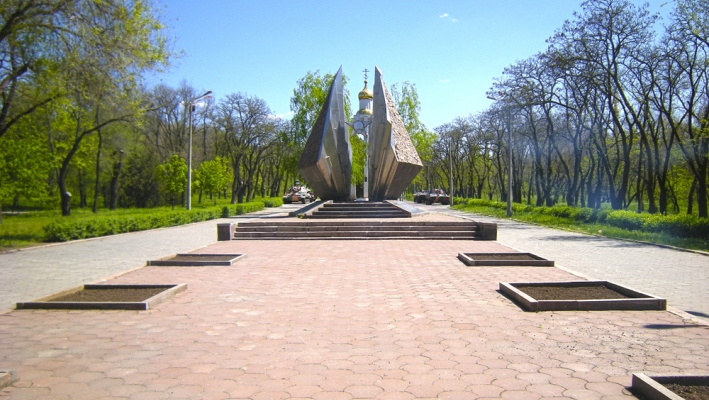In the 19th century, before the present entrance to the Culture Park was Belchinsky Steele, feeding on the course of Volka, which was flowing from the Voltsky hills. Flowing from Pelchynsky Pond, the stream fell through the Paneysky Pond in the Forty River. On the Pelchynsky pond, a military-style military bath building was built. Here nobility walked the city, and in winter they arranged a skating rink.
On September 14, 1845, a magnificent charity show was held for the victims of the Poltava flood. Before retreating in 1915, Belchinski descended on the Russian army, after which he was not filled with water and in 1921 he finally left asleep, paving the street Belchenskaya (present-day Vitovsky Street).
At the site of the current Dynamo indoor basin since the beginning of the 20th century, it was the largest public ice skating rink in the Lviv Skating Society with electric lighting running in winter and tennis courts in summer. From here, from tennis courts to the Cadet School stretched the small Belchen Park (10 hectares), which actually occupied that part of the present park, which lies between the central alley and the street. Field Heroes. At the top of the park from the street. Field Heroes along the street. Striyskoho Street. Lizhverskaya was bulldozed in the 1920s by the severely abandoned Old Cemetery Cemetery, which was finally eliminated in the process of building a cultural park. In the valley, on the street. Zaritskikh contained abandoned clay.
Amusement park projects in Lviv
With the annexation of Western Ukraine to the Soviet Union, the new government defined the task of "transforming the present environment of Lviv into a Soviet form." One of the hallmarks of Lviv's "non-socialism" was the absence of a Soviet-style amusement park. An example of such parks was the culture and entertainment park for them. M. Gorky in Moscow.
In 1940, after a long discussion in Lviv, a decision was made to locate the recreational park in Pogulanka Park. It was planned to allocate an area of 100 hectares to the park. The park envisioned a musical sink, dance floor, small arms shooting range in 50 shooting locations, a 5,000-seat summer theater, a 100-seat restaurant and several fountains. The project was not implemented due to the beginning of the Soviet-German War in 1941-1945.
The master plan for the reconstruction of Lviv after the war (1946) envisaged the establishment of a cultural park in Pogulianka, but the architects Heinrich Shevtsky-Vinnitsky and Stanislav Sokolov prepared the proposal for the establishment of a cultural park at the present location - between Stry and Denizky Street.
x
T
R
F
I
H
I
We have 16614 Parks Now ... The First and largest platform for green public parks
Міський парк культури і відпочинку
Міський парк культури і відпочинку
Chelyuskintsiv St, 189, Donetsk, Donetsk Oblast, Ukraine, 83000
Every Day : 24 Hours .
About Park
-
Preview
One of the biggest park in МакіївкаImportant Information
-
Every Day
24 Hours -
Park Area
260000.00 SQM -
Foundation Date
1/1/1984
-
Every Day
-
Intertainment Elements
Sports
Sitting places
Restaurants
Trips
Kids area
-
Main Elements
- Cleanliness
- Parking and public transport
- Green areas
- Open spaces
- Open paths for walking



